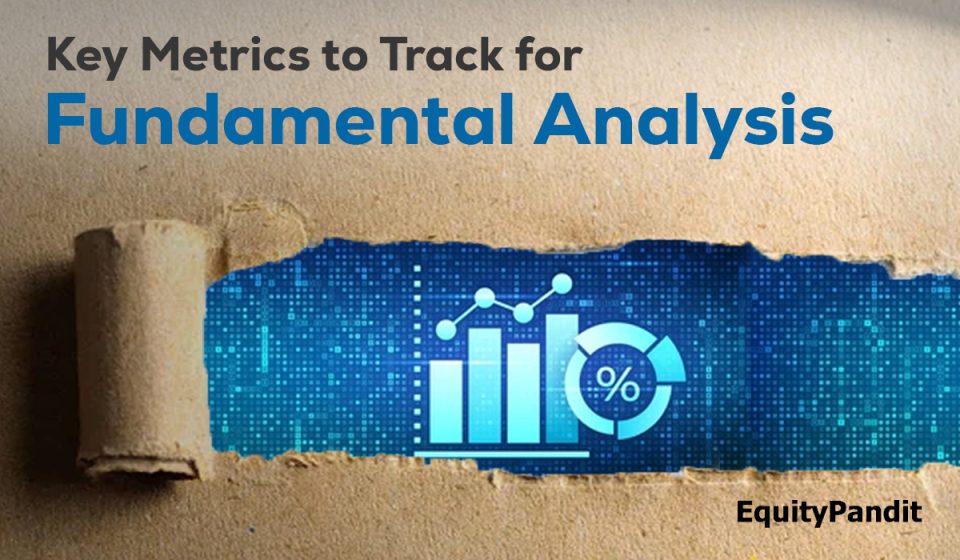Value investors hunt for hidden gems in the stock market by using key metrics to identify undervalued stocks. They believe the market often overreacts to news—both positive and negative—leading to price movements that don’t reflect a company’s true long-term value. This creates opportunities for savvy investors to capitalise on deflated prices.
While there’s no single “correct” method for analysing a stock, value investors rely on financial ratios to assess a company’s fundamentals. Here are some of the most popular financial metrics used by value investors.
1. Price-to-Earnings Ratio (P/E)
The P/E ratio is nothing but a simple financial ratio that looks into the price relative to earnings per share, or EPS. In other words, investors make use of that number so they can determine if the stock is overpriced or underpriced in comparison with earnings.
A very high P/E ratio may be interpreted to convey that the stock is highly priced in relation to its earnings and overvalued. Low P/E ratio may imply cheap earnings. The use of a P/E ratio in finding undervalued stocks makes it an essential tool for the value investor.
Formula: P/E Ratio = Market value Per share / Earnings Per Share (EPS)
2. Debt-to-Equity Ratio (D/E)
Another critical ratio is the D/E ratio, which reflects how a firm funds its assets to the investors, showing a good balance of debt and equity in funding the firm’s operations.
A low debt-equity ratio signifies that the company relies on a relatively greater amount of equity financing as compared to debt financing whereas a high debt equity ratio indicates that such a company has very minimal financing from equity.
On the other hand, heavy debt can be dangerous if the firm lacks the earnings or cash flow to service the debt.
Formula: D/E Ratio = Total Liabilities / Total Shareholders’ Equity
3. Price-to-Book Ratio (P/B)
The Price-to-Book Ratio, also known as P/B Ratio, is calculated to compare the market price and the book value of the company’s stock and is used to assess stock valuation relative to the company’s worth.
If a P/B of less than 1 indicates the realisation of value instead of the stock’s prevailing price, then the stock may be said to be undervalued since assets would be expected to have value greater than the P/B of the stock. On the other hand, in the case of a P/B being more than one, it implies that investors demonstrate willingness to pay a price exceeding the stock purchase which is usually associated with expectations of growth.
The P/B ratio is commonly used to value companies with significant physical assets, like those in manufacturing or financial sectors.
Formula: P/B Ratio = Market Price per Share / Book Value per Share
4. Earnings Per Share (EPS)
Earnings Per Share or EPS is one of the most critical measures used to judge the profitability of any company. It is the amount of earnings that will be distributed for each and every share of common stock outstanding.
A higher EPS indicates higher profitability, allowing investors to measure the financial health of a company and to compare the same among industry counterparts.
Formula: Earnings Per Share (EPS) = (Net Income − Dividends on Preferred Stock) / Average Outstanding Shares
5. Return on Equity (ROE)
Return on Equity (ROE) measures the return a shareholder earns from his investment in a company. It is, therefore, a way by which the effectiveness with which the company generates profits to give to its shareholders can be determined.
Stock prices are mainly driven by profit. This makes ROE an indicator of how healthy the finances are within a company. It is, therefore, useful in appraising what is fair value for the stock.
Formula: Return on Equity (ROE) = (Net Income / Shareholders’ Equity) * 100
6. Dividend Yield Ratio
Dividend measures the amount a company pays out in dividends each year in relation to its share price, estimating how much dividend return a stock investment can provide.
There exists a converse association between the stock price and the yield, which means that it appreciates when there is a decline in stock price and vice versa goes down when the stock price appreciates, intimating to the investor how much one is realised for every Rupee spent in the company shares.
Formula: Dividend Yield Ratio = (Annual Dividends per Share / Market Price per Share) * 100
7. Market Capitalisation
Market Capitalisation represents the total value of a company’s outstanding shares, helping investors gauge its size and compare it to other companies in the same industry.
Based on this common evaluation method, investors can choose from 4 types of stocks. A balanced portfolio with a mix of these stocks helps reduce risk.
| Type of Stocks | Market Cap |
| Small-Cap Stocks | Up to Rs.500 crore |
| Mid-Cap Stocks | From Rs.500 crore up to Rs.7,000 crore |
| Large-Cap Stocks | From Rs.7,000 crore up to Rs.20,000 crore |
| Mega-Cap Stocks | Above Rs.20,000 crore |
Formula: Market Cap = Current Stock Price * Total Number of Outstanding Shares
8. Book Value
It is the value of a company’s assets minus its liabilities, as recorded on its balance sheet, indicating the net value of a company’s equity, which is sometimes called NAV, or net asset value.
Book value helps determine the intrinsic value of a company, especially for firms with large numbers of physical assets, to determine if a stock has an undervalued or overvalued price.
In case a company’s market value, or value of the stock, is higher than the book value, it implies that investors expect the company to generate more future earnings.
If market value is below the book value, then the company is considered undervalued.
Formula: Book Value = Total Assets – Total Liabilities
9. Face Value
Face value, also known as par value or nominal value is the original price put on a share of stock or bond when the certificate is issued or in a company’s records. Share of a company is recorded in books at its face value when issued.
In shares face value determines some accounting values, such as equity capital appearing on the balance sheet. The market value of a share is, however, an issue of greater concern to an investor than its face value.
10. EBITDA Growth
EBITDA Growth refers to the variation of Earnings Before Interest, Taxes, Depreciation, and Amortisation in respect of a firm over a particular period. This measure reveals the operating and cash generating skills of the firm.
The EBITDA Growth Rate will reveal by how many percent the core earnings of a firm have risen or fallen compared to any other prior period net of non-operating items.
A high EBITDA growth rate indicates improved operational efficiency, business expansion, or increased profitability for the company.
Unlock profitable opportunities every day! Unicorn Signals provides actionable intraday trading signals for stocks and futures. Don’t miss out – download Unicorn Signals and start winning now!
 Live
Live

